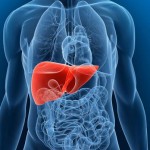By Peter G. Traber, M.D. on November 5, 2015
To me, the recent FDA approval of the use of Opdivo® (nivolumab) in combination with Yervoy® (ipilimumab) for the treatment of patients with metastatic melanoma represents an inflection point in cancer immunotherapy. The announcement marks the first FDA approval of a regimen combining two immuno-oncology agents for the treatment of cancer. There will be more.
Immunotherapy in cancer augments a patient’s own immune system to attack and kill a tumor. In many cancer patients, the immune system does not naturally work this way because cancer cells have multiple ways to avoid and inhibit the immune system. My last CEO Perspective talked about the role of galectin-3 in promoting the spread of cancer and in inhibiting the immune system.
I am excited about developments underway in cancer immunotherapy. There are a number of approaches being taken, including tumor vaccines, immune cell stimulation, genetic engineering of the patient’s immune cells and administering therapeutic antibodies that affect the immune system. There are two fundamental approaches that I will discuss.
The first is enhancing antigen presentation through the use of various tumor vaccines. Antigens are proteins or some other foreign element that the immune system can recognize either with a cellular response or with an antibody response. There are potential antigens on tumor cells, but often they’re not efficiently or effectively presented to the immune system. Antigen presentation through the use of tumor vaccines is intended to improve the body’s ability to recognize the cancer cells as a threat.
If you can “vaccinate” a person with the right tumor antigen, this would stimulate the immune system to recognize and kill the tumor cells. There’s at least one cancer vaccine on the market that has done this: Provenge (sipuleucel-T), a prostate cancer vaccine approved by the FDA in 2010. While Provenge has not had commercial success as yet, it opened the door for many vaccine approaches now being studied (more here).
The other approach to immunotherapy is immune cell stimulation, which can be direct stimulation with cytokines, or a newer approach that seeks to overcome the mechanisms that tumors use to inhibit the immune system. The immune system has built-in “brakes” that keep it from running amok. If you get the flu, your immune system kicks in and kills the flu viruses along with any cells that contain the virus. However, once the infection is eliminated, if you don’t turn the immune system off, it will keep going and start killing other cells. Autoimmune diseases are the result of this kind of over-activity of the immune system.
Cancer cells find a way to produce compounds and substances that activate these brakes, and the new immunotherapies are focused on “taking the brakes off” so that immune cells can recognize and attack tumors. An important class of targets for this approach is immune checkpoint proteins, which include CTLA-4 and PD-1, among others. There are FDA-approved drugs that inhibit CTLA-4 (ipilimumab, marketed as Yervoy®) and PD-1 (pembrolizumab, marketed as Keytruda®, and mivolumb, marketed as Opdivo®). These are monoclonal antibodies that bind to and inhibit the checkpoint receptors, and thus are called immune checkpoint inhibitors.
Checkpoint inhibitors represent a revolutionary improvement in cancer care. The first indications were in advanced melanoma, a deadly skin cancer, and treatment has resulted in a percentage of patients with long-term remissions, a situation not seen with other types of therapies.
Cancer immunotherapy (as exemplified by Yervoy) was named Breakthrough of the Year by Science magazine, and the inventor of Yervoy just received the Lasker-DeBakey Clinical Medical Research Award. Many people who get the Lasker Award go on to receive a Nobel Prize as well. Needless to say, Yervoy is a big breakthrough.
Yet, as effective as Yervoy is by itself, the real opportunity lies in combining multiple immunotherapies. If we stick with the metaphor of cancer applying the brakes to the immune system, then Yervoy has only released the parking brakes. Cancer still has other brakes it can apply, and using immunotherapies in combination gets the entire immune system ready to roll and produces an increasing effect.
This is why I consider FDA approval of a dual Yervoy/Opdivo combination therapy a major inflection point. The days of developing a single agent as an immune therapy are fading fast. It is unlikely that any single immunotherapy agent is going to cure most patients. Therefore, the only real way to develop immunotherapies is in combinations, including with tumor vaccines. That’s similar to the history of chemotherapy, where the standard of care quickly evolved to giving a patient a regimen of four or more different chemotherapeutic agents. If you are developing a new chemotherapy drug, it often must be administered in combination with existing therapies.
Galectin-3, acting as another brake on the immune system, becomes a potential target in combination with therapies that inhibit PD-1, CTLA-4 or both. Such combination therapies can have an even bigger impact on activating the immune system to attack cancer. I will explore our activities in developing GR-MD-02 for applications in cancer immunotherapy in a future CEO Perspective.
Combination immunotherapy is here to stay. From my perspective, it is going to become standard of care and companies are not going to be able to develop individual immunotherapies without taking combinations into consideration. Ironically, the thing that I worry about in this area is just how much is going on. The number of immunotherapy agents in development and the number of trials underway are simply mind-boggling. If you were to calculate the number of patients you would need for clinical trials for all the various combinations of these therapies, it would be challenging to find enough patients to adequately study them.
The market for cancer immunotherapies is going to be challenging, and companies are going to be very selective about what therapies they go after. However, for us, if our clinical trials show an effect, we believe we will have the tools to convince the oncology world that our compound is worth continued development. First of all, GR-MD-02 works through a different mechanism, one that is additive to the other targeted mechanisms. Equally important, it appears to be safe and less expensive to produce in comparison with the other treatments. The Yervoy®/Opdivo® combination therapy, for example, costs up to $250,000 a year for just the drugs. So, there may be an opportunity for a less expensive drug that also adds to the outcome for the patient.
These “CEO Perspectives” are a regular feature of our communication activities and may contain forward looking statements within the meaning of the Private Securities Litigation Reform Act of 1995. These statements relate to future events and use words such as “may,” “might,” “could,” “expect” and others. These statements include those regarding the hope that Galectin Therapeutic’ s development program for GR-MD-02 will show that it can be both safe and effective when used in combination with other drugs for the treatment of patients with cancer and also less expensive than alternative drugs. For a discussion of additional factors impacting Galectin’s business, see the Company’s Annual Report on Form 10-K for the year ended December 31, 2014, and subsequent filings with the SEC. You should not place undue reliance on forward-looking statements. Although subsequent events may cause its views to change, management disclaims any obligation to update forward-looking statements
Please look for future editions in which multiple aspects of our development programs for unmet medical needs will be addressed.





